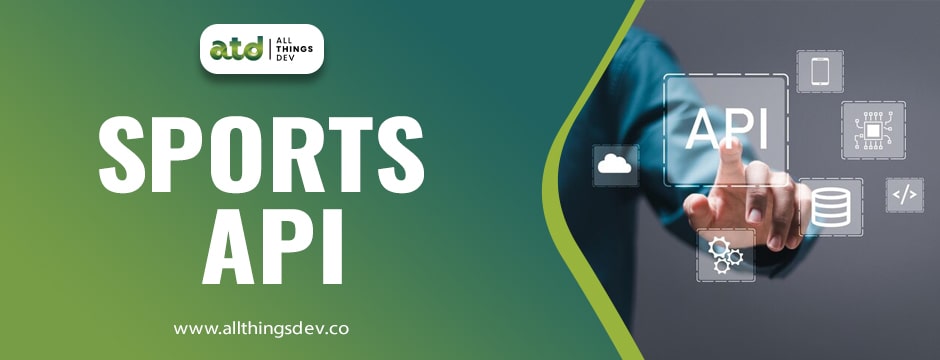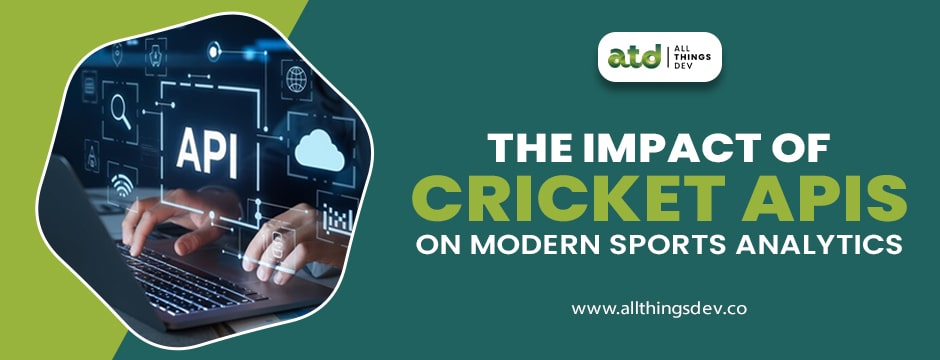The Impact of Cricket APIs on Modern Sports Analytics
Deepak Blog Cricket APIs, sports api 0
In the past few years, sports analytics has become an important part of managing success, making strategies, and getting fans involved in many sports. Cricket is a game with a deep-rooted history and an always-changing transformation. One of the key drivers of this analytical revolution in cricket is the rise of Application Programming Interfaces (APIs). Cricket APIs have enabled an era where real-time data collection, analysis, and dissemination provide insights that were previously unimaginable.
In this blog, we’ll explore the multifaceted impact of Cricket Application Programming Interfaces on modern sports analytics, highlighting how they have reshaped team strategies, player performance tracking, fan engagement, and even the business side of the sport.
What are Cricket Application Programming Interfaces?
Cricket Application Programming interfaces are tools that allow software to interact. They provide real-time data on match statistics, player performance, ball-by-ball tracking, and historical records.
These APIs are used by broadcasters, analysts, teams, and fans to make informed decisions and improve the viewing experience. Users can access live match data, player metrics, detailed statistics, and predictive analytics through these platforms.
Transforming Team Strategy and Performance
1. Data-Driven Decisions for Teams
One of the most significant impacts of APIs is their ability to transform how teams approach strategy. In modern cricket, teams no longer rely solely on gut feeling or a captain’s experience. Instead, detailed data analysis is employed to make informed decisions about batting order, field placements, and bowler rotations.
APIs provide comprehensive insights into each player’s strengths and weaknesses, which can be analysed to determine optimal matchups. For example, using API data, a team might recognise that a particular bowler has an excellent record against left-handed batsmen and adjust their game plan accordingly.
2. Player Performance Tracking
Cricket APIs provide real-time metrics on player performances, which help coaching staff track form, fitness, and consistency. These metrics go beyond basic statistics like runs and wickets to provide details on bowling speeds, bat swing speeds, fielding efficiency, and player movement.
This detailed data has transformed player training. Coaches can now customise training programs to address specific areas for improvement. For example, if a bowler’s API data shows their economy rate increases in the final overs, it indicates a need to improve delivery variation under pressure.
3. Injury Prevention and Fitness Monitoring
Cricket Application Programming Interfaces are crucial in injury prevention and fitness monitoring. APIs that track player workloads (number of overs bowled, distances covered in the field, etc.) help teams manage player fitness better and reduce the risk of injury.
This real-time data enables physiotherapists and fitness trainers to monitor fatigue levels and adjust training or rest days accordingly. Over time, this analytical approach reduces the likelihood of injuries caused by overexertion, especially during gruelling cricket schedules.
Enhancing Fan Engagement
1. Real-Time Updates and Interactive Experiences
For fans, APIs have dramatically changed how they interact with the sport. It provides real-time match updates, ball-by-ball commentary, and detailed statistics that can be accessed through websites, mobile apps, and live broadcasts. Fans can follow matches closely, even if they’re not in front of a TV screen, and receive detailed insights on every game.
It also powers interactive fan experiences. Platforms that offer fantasy cricket leagues, for example, rely on these APIs to provide real-time player performance data. Fans can make decisions on which players to select or substitute based on the latest stats, adding a layer of strategy to their engagement with the sport.
2. Enhanced Viewing Experiences
Live broadcasts of cricket matches have evolved beyond simple commentary and replays. With the integration of Cricket Application Programming Interfaces, broadcasters can overlay real-time statistics on the screen, provide predictive analytics on possible match outcomes, and even display data on bowling speeds, delivery trajectories, and player positioning.
This has made the viewing experience far more dynamic and engaging. It provides rich insights that keep fans informed and entertained in their connection to the game and enhance their overall experience.
The Rise of Predictive Analytics on Sports API
One of the most revolutionary aspects of APIs is their ability to drive predictive analytics. By analyzing historical data along with real-time match statistics, analysts can predict various aspects of a game. This includes predicting individual player performances, potential match outcomes, and even identifying moments when a particular team is gaining an advantage.
Predictive models using Sports APIs can estimate a team’s chance of winning at any moment in a match. This helps teams make tactical decisions, like promoting a batsman during crucial times or selecting a specific bowler when needed.
Moreover, predictive analytics has created new opportunities for the sports betting industry. APIs give bettors accurate, real-time data to guide their betting choices. This combination of data analytics and sports betting has opened new revenue streams for those involved in cricket.

Business Implications on Sports Technology
Cricket Application Programming Interfaces have positively impacted the business side of the sport. Sports API companies use these APIs to create platforms for teams, broadcasters, and analysts. These platforms offer various services. They include real-time data visualisation and long-term performance analysis.
For tech startups, it has led to new products that enhance the fan experience. Examples include fantasy cricket platforms, analytical tools for broadcasters, and mobile apps with live match data and player statistics.
Additionally, it helps teams and sponsors make more money from the sport. With better fan engagement, detailed performance analytics, and new technology to attract more sponsorships. This allows them to develop new revenue streams.
Conclusion
Cricket APIs have transformed the sports analytics process. They have changed team strategies and improved player performance tracking. APIs also provide fans with real-time, immersive experiences. This technology has redefined how cricket is played, viewed, and analysed. Predictive analytics, driven by API data, enhances strategic decision-making for teams and broadcasters. As technology evolves, it will continue to play a crucial role in cricket. The ability to analyse large amounts of data in real-time is now essential in modern cricket. Therefore, it has become an indispensable tool for achieving success on and off the field.
Transform your cricket analytics with All Things Dev for powerful and real-time sports APIs!

